I have this stepper motor with unknown back EMF / RPM. There are 200 steps/rev (i.e. 1.8deg step angle), and 8mH "phase inductance", but I'm not sure if that's enough to calculate back EMF.
I hooked up one of the parallel windings from each phase to an oscilloscope. (Specifically, red/yellow on one probe, white/orange on the other probe.)
I then manually rotated the shaft and captured the following measurement. You can see that the time between two signal peaks is ~770Hz and the voltage magnitude is ~33V.
- Do those two 90deg-phased peaks correspond to one step each, therefore implying that the RPM at that time was 770(step/sec) / 200(step/rev) * 60(sec/min) = 231RPM?
- Does that imply that the back EMF is 33V/231RPM = 143mV/RPM?
- If so, how is that reconciled with the specs saying 30VDC is sufficient to drive the stepper at 1500RPM, which would then correspond to ~214V in back EMF?
I'm a bit confused. If the motor was hooked up in "serial" mode instead, that would result in an even "worse" (double) back EMF/RPM.
Edit: FYI, in case anyone thinks this is because there is no load attached, I applied a 22 Ohm resistor to one of the parallel winding terminals, performed a similar measurement and calculated a similar back EMF constant of 134mV/RPM (compared to 143mV/RPM earlier). So I don't think it has to do with the terminals being "open circuit" (which they technically wouldn't be anyway, since the scope probe or air has a very large but still not infinite resistance).
Edit 2: This question is similar and seems to support my back emf constant measurement method. However, that person was also encountering an unexpected value, and no satisfying answer was given.
Edit 3: I should add, my calculated back EMF / RPM was based on the sinusoidal peak vs the average (which it should be according to this answer). Therefore, to make my calculated back EMF constant above consistent with the usual definition, it should be multiplied by 2/pi ~= .637. However, even 64% of the calculated voltage at 1500 RPM is still way above the 30V I was expecting to be able to use.

